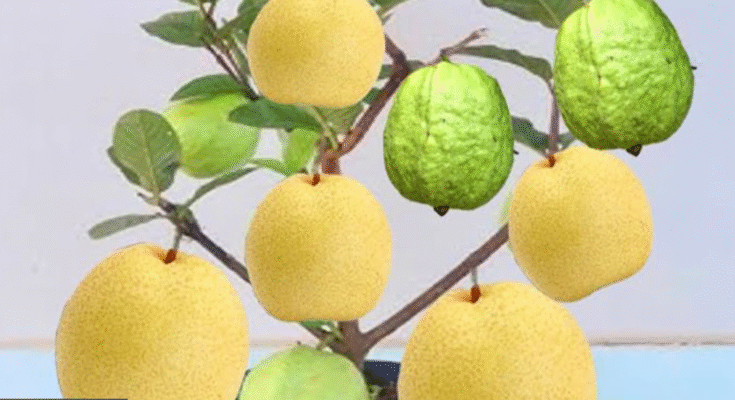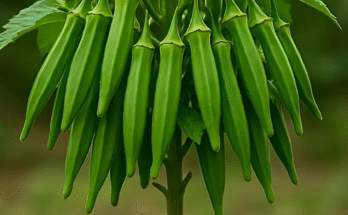Great Technique for Grafting Apple Fruit to Apple Trees Using Aloe Vera
Grafting is one of the oldest and most successful techniques used by fruit growers to improve plant quality, increase fruit yield, and combine the best traits of two different plants. When it comes to apple trees, grafting plays a crucial role in ensuring better fruit quality, disease resistance, and faster fruiting. But did you know that using aloe vera during the grafting process can significantly boost success rates and plant health? In this guide, we’ll explore the great technique for grafting apple fruit to apple trees using aloe vera — a natural, easy, and highly effective method that helps you grow healthier apple trees faster.
🌳 Why Graft Apple Trees?
Apple trees can take several years to bear fruit if grown from seeds, and the resulting fruit might not resemble the parent apple at all. Grafting solves this problem. By joining a scion (a branch from a mature, fruit-bearing apple tree) onto a rootstock (a young, healthy apple seedling), you can produce fruit that is identical in quality to the parent tree — and do it much faster.
Grafting also helps:
- Produce uniform and high-quality fruits.
- Combine the strength of one tree’s roots with another’s fruiting ability.
- Repair damaged or diseased apple trees.
- Multiply rare or heirloom apple varieties.
When aloe vera is added to this process, it enhances the natural healing between the graft and rootstock, reduces infection risk, and stimulates faster bonding.
🍏 The Power of Aloe Vera in Grafting
Aloe vera isn’t just a skin remedy — it’s also a powerful natural rooting and healing agent for plants. The gel inside aloe leaves contains enzymes, hormones, and minerals that promote root growth, tissue healing, and disease resistance.
Here’s why aloe vera is a great choice for grafting apple trees:
- Natural Antibacterial & Antifungal Properties: Prevents infections at the graft union.
- Rich in Growth Hormones (Auxins & Gibberellins): Stimulates faster callus formation — the tissue that fuses the scion and rootstock together.
- Moisture Retention: Keeps the graft area hydrated, preventing drying or cracking.
- Improved Nutrient Transfer: Aloe vera enhances the absorption of nutrients, helping the graft heal faster.
Using aloe vera in grafting is a simple, organic alternative to chemical rooting hormones — and it’s readily available in most home gardens.
🌱 Materials You’ll Need
Before you begin the grafting process, prepare the following materials:
- A healthy apple tree (rootstock) about 1–2 years old.
- A scion from a mature apple tree with good fruiting characteristics.
- Fresh aloe vera leaves (preferably thick and juicy).
- A clean sharp knife or grafting tool.
- Grafting tape, plastic wrap, or a piece of clear plastic bag.
- Clean cloth for wiping tools and surfaces.
Optional but helpful:
- Small rubber bands or string to secure the graft.
- Sterilizing solution (alcohol or diluted bleach) to clean tools.
🍃 Step-by-Step Guide to Grafting Apple with Aloe Vera
Step 1: Prepare the Rootstock
Choose a healthy young apple tree that has a strong, disease-free stem. Cut the top part of the rootstock (about 15–20 cm from the ground) using a clean, sharp knife. Make a vertical slit or “V-shaped” cut in the stem to prepare a slot for the scion.
Step 2: Select and Prepare the Scion
Pick a healthy scion from a mature, productive apple tree. The scion should be about 10–15 cm long, with 2–3 buds on it. Cut the bottom of the scion into a wedge shape so that it fits neatly into the slit on the rootstock.
Step 3: Extract Aloe Vera Gel
Cut open a fresh aloe vera leaf and scoop out the transparent gel using a spoon or knife. You can also squeeze the gel directly from the leaf. Make sure to use fresh gel, as it contains the highest concentration of nutrients and enzymes.
Step 4: Apply Aloe Vera to the Graft Area
Before inserting the scion, apply a thin layer of aloe vera gel on both the cut surface of the scion and the rootstock. This acts as a natural healing and bonding agent. The aloe helps the tissues merge faster and protects them from bacterial infection.
For even better results, you can dip the scion base into the aloe vera gel for a few minutes before grafting.
Step 5: Join the Scion and Rootstock
Insert the scion wedge firmly into the slit on the rootstock so that the inner layers (cambium) of both pieces align closely. Proper alignment is essential for successful grafting. Once fitted, wrap the graft area tightly using grafting tape, a piece of clear plastic, or a soft rubber band.
Step 6: Seal and Protect
After securing the graft, apply a small amount of aloe vera gel on the outer surface of the joint. This helps seal the area and prevent moisture loss. Keep the plant in a shaded area for about 1–2 weeks to let the graft heal and bond.
Step 7: Monitor and Care
After 2–3 weeks, you’ll start to notice new bud growth from the scion. Once the graft is firmly healed, remove the plastic wrapping carefully. Water the plant regularly but avoid overwatering. Protect it from strong sunlight until it becomes strong enough to grow independently.
🌤️ Tips for Faster Growth and Higher Success
- Always use fresh aloe vera gel — not store-bought gels with chemicals.
- Graft during the early spring or late winter when apple trees are actively growing.
- Keep tools sterilized to avoid infections.
- Make clean, smooth cuts — rough cuts delay healing.
- You can also mix aloe vera gel with a bit of honey for extra antibacterial power.
🍎 The Result: Healthier, Faster-Growing Apple Trees
When you use aloe vera in grafting, you’ll notice faster healing at the graft site and earlier sprouting of new leaves. The aloe’s nutrients promote strong tissue growth, ensuring a firm bond between the scion and rootstock. Over time, this leads to healthier, more vigorous trees that can bear fruit earlier and produce better-quality apples.
🌼 Conclusion
Grafting apple trees using aloe vera is a simple yet powerful natural technique that blends traditional horticultural methods with organic plant care. It not only increases your grafting success rate but also strengthens your trees and enhances fruit production. Whether you’re a home gardener or a fruit enthusiast, this method is worth trying for faster, more rewarding results.



